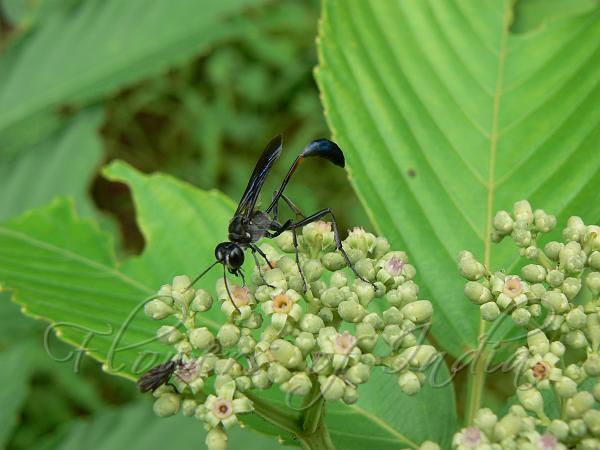|
| Asiatic Leea |
|

|

| File size | 1980778 |
| Original date | 7/14/07 3:27 PM |
| Resolution | 2816 x 2112 |
| Flash | Flash did not fire, auto |
| Focal length | 11.4mm |
| Exposure time | 1/125s |
| Aperture | 4.0 |
| Focus Distance | |
| Metering Mode | Multi-segment |
| Camera make | Panasonic |
| Camera model | DMC-FZ7 |
| Sensor type | OneChipColorArea |
|
|
|
|
Photo: |
Botanical name: Leea asiatica Family: Vitaceae (Grape family)
Synonyms: Leea aspera, Leea crispa, Phytolacca asiatica
Synonyms: Leea aspera, Leea crispa, Phytolacca asiatica
Asiatic Leea is an erect gergarious shrub with angular stem swollen above the
nodes and internodes. Petioles and peduncles usually have narrow crisped
wings. Leaves are pinnately compound - not double-pinnate like
Bandicoot Berry. Leaflets are 3-5,
laterals opposite, ovate or ovate-oblong, serrate, tip sharp, base rounded
or heart-shaped. Flowers, 5-6 mm across, greenish white, are borne in
short, cymes at the end of branches. Calyx united, cup-like, teeth 5,
obscure, often glandular-tipped. Petals 5, connate, 2-3 mm long, ovate,
acute. Stamens 5, united; staminal tube 5-lobes, 2-celled. Ovary inserted
on the disc; style short; stigma 2-lobed. Leaf extract is mixed with water
and used for washing hair by Chiru tribe in NE India. Flowering: September.
Medicinal uses: Root tuber is used against guineaworms. The root
with bark of Boswellia serrata is made into paste which is
prescribed in case of snake-bite by the tribes of Hazaribag district of
Bihar.
Root tuber is used against guineaworms. The root
with bark of Boswellia serrata is made into paste which is
prescribed in case of snake-bite by the tribes of Hazaribag district of
Bihar.
Medicinal uses:
 Root tuber is used against guineaworms. The root
with bark of Boswellia serrata is made into paste which is
prescribed in case of snake-bite by the tribes of Hazaribag district of
Bihar.
Root tuber is used against guineaworms. The root
with bark of Boswellia serrata is made into paste which is
prescribed in case of snake-bite by the tribes of Hazaribag district of
Bihar. | Identification credit: Dinesh Valke | Photographed in Maharashtra. |
• Is this flower misidentified? If yes,